How to Plan a Website with Perfect UI/UX: Best Sitemap & Wireframe Examples for 2026


Key Takeaways
- Why websites fail without proper UI/UX planning
- Best wireframing and sitemap tools to use in 2026
- Real sitemap examples for eCommerce, SaaS, and portfolio
- The three types of wireframes (low, mid, high fidelity)
- Comparison table: sitemap vs. wireframe roles and use cases
A powerful website doesn’t start with colors or code; it starts with structure. In 2026, wireframes and sitemaps remain two of the most essential elements in UI/UX design.
This guide breaks down the difference between a sitemap and a wireframe, provides real-world examples, and explores modern AI tools that make the process faster and smarter.
Why Modern Websites Fail Without Solid UI/UX Planning
Most websites that fail to convert users don’t suffer from poor visuals; they suffer from poor planning.
When a website lacks a clear sitemap or proper wireframe, users struggle to navigate, and designers end up revising endlessly.
In 2026, successful brands, from startups to SaaS leaders, rely on data-driven UX planning using AI-powered sitemaps and dynamic wireframes.
You’ll learn here:
- What sitemaps and wireframes really are
- How they differ and complement each other
- The best tools to use in 2026
- Real examples from top-performing websites
What Is a Wireframe?
A wireframe is the visual skeleton of a website, a simple outline that defines how each page will look and function.
Purpose
It helps designers decide where to place buttons, text, forms, and images before the design phase begins.
Types of Wireframes
- Low-Fidelity: Rough sketches for basic structure
- Mid-Fidelity: Add more detail and layout accuracy
- High-Fidelity: Nearly finished, including UI elements and interactions
Best Tools for Wireframing
.webp)
- Figma – Real-time collaboration
- Balsamiq – Great for fast sketching
- Adobe XD – Polished design-to-prototype workflow
- If you are a beginner, you can take the Udemy Course on UIUX with Figma and Adobe XD
Why It Matters:
Wireframes shape user flow, guide content hierarchy, and reduce visual confusion during the design phase.
What Is a Sitemap?
A sitemap is like a map of your website’s pages, showing how every page connects and the order in which users navigate through them.
Types of Sitemaps
- Visual Sitemap: Used by designers to plan the structure
- XML Sitemap: Used by Google for SEO indexing
Tools to Build a Sitemap
- FlowMapp – Intuitive drag-and-drop visual maps
- Miro – Collaboration-focused
- Octopus.do – Great for fast visual sitemaps
SEO Value:
A well-structured sitemap helps Google understand site hierarchy, improving crawl efficiency and visibility.
Why Sitemaps & Website Wireframes Are Crucial in UI/UX Design
In UI/UX design, structure comes before style. Without a sitemap or wireframe, even the best visuals can fail to deliver user satisfaction.
Top Benefits
- Clear communication between designers & developers
- Faster revisions and project delivery
- Stronger UX flow and conversion rates
- Easier SEO optimization
2026 Trend: AI-driven sitemap and wireframe tools like Uizard, Relume, and FlowMapp AI make early planning 2× faster.
Example:
ideapeel & LegalPeel use sitemap-first workflows to define structure before design, reducing UX friction and improving user retention.
[[question-block]]
The 3 Main Types of Website Wireframe in UI/UX Design (2026 Update)
In modern UI/UX design, wireframes act as the blueprint of a digital product, showing layout, structure, and user flow before any color or code comes into play.
There are three main types of wireframes every designer should know: low-fidelity, mid-fidelity, and high-fidelity.
Each serves a unique purpose in shaping a user-friendly, high-performing website or app.
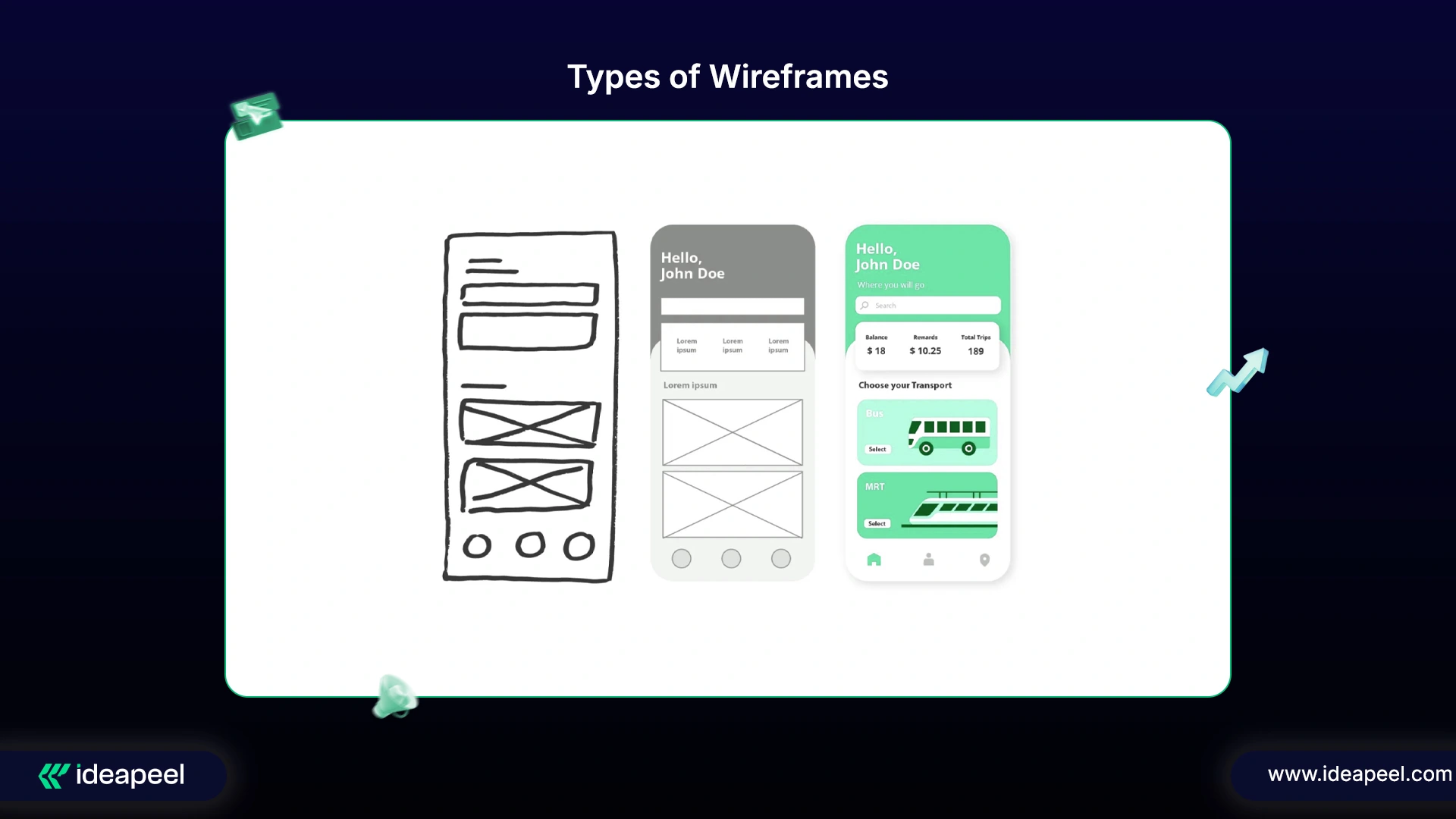
1. Low-Fidelity Wireframes
Description:
Low-fidelity wireframes are the rough drafts of design ideas, quick sketches that capture layout and structure without fine details. Designers often use pen and paper or simple digital tools like Balsamiq to outline the user journey.
Characteristics:
- Use of simple shapes and grayscale tones
- Placeholder text such as “Lorem Ipsum”
- No attention to fonts, colors, or imagery
- Focus on layout and navigation only
Tip: Use low-fidelity wireframes during team workshops or early client discussions.
Purpose:
To brainstorm design concepts, visualize structure early, and collect initial stakeholder feedback before investing time in detailed visuals.
2. Mid-Fidelity Wireframes
Description:
Mid-fidelity wireframes refine the layout and start bringing structure and functionality together. They bridge the gap between rough sketches and detailed prototypes, providing a clearer representation of how the interface will work.
Characteristics:
- Created with digital design tools (like Figma or Sketch)
- Include clearer hierarchy, accurate spacing, and simple icons
- Use basic text instead of placeholder copy
- Avoid full-color or brand-specific typography
Tip: Best for usability discussions and mid-stage client reviews.
Purpose:
To ensure design consistency, refine navigation, and align designers, developers, and stakeholders on functionality and content placement.
3. High-Fidelity Wireframes
Description:
High-fidelity wireframes are detailed, near-final versions of the design. They closely resemble the finished website or app and are often interactive, helping simulate the real user experience.
Characteristics:
- Include real content, images, colors, and typography
- Accurately represent layout, spacing, and interactions
- Can be turned into clickable prototypes
- Ideal for final testing and developer handoff
Pro Tip: Use high-fidelity wireframes to identify user friction points before coding begins.
Purpose:
To conduct usability testing, gain final client approval, and serve as the blueprint for development.
How to Structure a Website Sitemap: Real Examples You Can Copy
1. E-commerce Website Sitemap
.webp)
A clean sitemap guides users and search engines through your store smoothly.
- Home: Menu, reviews, features, FAQs.
- Products: Lists items with pages like AI Product 1 and AI Product 2 (features, pricing, testimonials).
- Solutions: Shows how products solve problems.
- Services: Covers extra support or setup help.
- About Us: Company story + Careers link.
- Blog: SEO articles with dedicated Blog Pages.
- Support: FAQs, knowledge base, contact options.
- Contact Us: Direct communication page.
Why it works: Boosts navigation, SEO, and user experience.
2. SaaS Web design Sitemap
%20(1).jpg)
A simple sitemap guides users and search engines smoothly.
- Home: Hero, features, testimonials, call-to-action.
- Features: Product benefits and highlights.
- Pricing: Plans with details and FAQs.
- Solutions: How the software helps teams and businesses.
- Resources: Blog, guides, case studies, tutorials.
- About Us: Company story, team, careers.
- Support: FAQs, knowledge base, live chat.
- Contact Us: Form and sales inquiries.
Why it works: Improves navigation, SEO, and user experience.
3. Portfolio Website Sitemap
.webp)
A clean sitemap guides users and visitors through your work smoothly.
- Homepage: Overview, featured work, skills, writing samples, credits.
- About: Background, experience, goals, contact info, resume.
- Featured Work: Projects, segments, sketches, coursework, and field pieces.
- Skills: Photoshop, video editing, audio, and other expertise.
- Writing Samples: Profile pieces, articles, publications.
- Credits: Courses taken, website content, original work.
Bonus: From sitemaps to wireframes, we’ve shared the essentials. Explore this link for more guidance on our full range of UI/UX services.
What Are the Key Differences Between a Sitemap and a Wireframe?
Let's dive into it in depth....Here it is
Final Insight
By understanding these three wireframe levels, UI/UX designers and teams can plan, validate, and perfect user journeys step by step, from concept to launch. In 2026, design teams that master this structured approach will deliver smoother user experiences, faster iterations, and more intuitive digital products.
Ready to Bring Your UI/UX Vision to Life?
You’ve seen how sitemaps and wireframes shape successful websites. Now it’s time to put those insights into action.
At ideapeel, we help startups, SaaS companies, B2b, and creative brands turn ideas into beautifully structured, high-performing digital experiences.
FAQ
1. Sitemap vs. Wireframe in UI/UX design
A sitemap shows website structure and navigation, while a wireframe shows page layout and element placement. Together, they guide users and improve the overall UI/UX design.
2. Why create a sitemap before wireframes?
A sitemap maps user flow and page connections. Without it, a wireframe might miss key navigation, making your UI/UX design less clear and user-friendly.
3. How do wireframes improve website experience?
Wireframes let designers plan content, spacing, and layout before the final design. Combined with a sitemap, they ensure a smooth, intuitive UI/UX experience.
Is having a sitemap and wireframe good for SEO?
Yes. A sitemap helps Google crawl and index your pages more efficiently, while a wireframe improves the layout and user experience of each page. Together, they create a clearer structure that supports stronger SEO and better user engagement.
Frequently Asked Question?
Everything you need to know about our service, and work process or pricing. Can't find answer you're looking for ? please chat with our friendly team.
We offer a wide range of design and development services, including UI/UX design, Webflow development, WordPress migration, branding, and custom web design tailored to meet your business needs.
We offer a wide range of design and development services, including UI/UX design, Webflow development, WordPress migration, branding, and custom web design tailored to meet your business needs.
We offer a wide range of design and development services, including UI/UX design, Webflow development, WordPress migration, branding, and custom web design tailored to meet your business needs.
Related Articles

A powerful website doesn’t start with colors or code; it starts with structure. In 2026, wireframes and sitemaps remain two of the most essential elements in UI/UX design.
This guide breaks down the difference between a sitemap and a wireframe, provides real-world examples, and explores modern AI tools that make the process faster and smarter.
Why Modern Websites Fail Without Solid UI/UX Planning
Most websites that fail to convert users don’t suffer from poor visuals; they suffer from poor planning.
When a website lacks a clear sitemap or proper wireframe, users struggle to navigate, and designers end up revising endlessly.
In 2026, successful brands, from startups to SaaS leaders, rely on data-driven UX planning using AI-powered sitemaps and dynamic wireframes.
You’ll learn here:
- What sitemaps and wireframes really are
- How they differ and complement each other
- The best tools to use in 2026
- Real examples from top-performing websites
What Is a Wireframe?
A wireframe is the visual skeleton of a website, a simple outline that defines how each page will look and function.
Purpose
It helps designers decide where to place buttons, text, forms, and images before the design phase begins.
Types of Wireframes
- Low-Fidelity: Rough sketches for basic structure
- Mid-Fidelity: Add more detail and layout accuracy
- High-Fidelity: Nearly finished, including UI elements and interactions
Best Tools for Wireframing
.webp)
- Figma – Real-time collaboration
- Balsamiq – Great for fast sketching
- Adobe XD – Polished design-to-prototype workflow
- If you are a beginner, you can take the Udemy Course on UIUX with Figma and Adobe XD
Why It Matters:
Wireframes shape user flow, guide content hierarchy, and reduce visual confusion during the design phase.
What Is a Sitemap?
A sitemap is like a map of your website’s pages, showing how every page connects and the order in which users navigate through them.
Types of Sitemaps
- Visual Sitemap: Used by designers to plan the structure
- XML Sitemap: Used by Google for SEO indexing
Tools to Build a Sitemap
- FlowMapp – Intuitive drag-and-drop visual maps
- Miro – Collaboration-focused
- Octopus.do – Great for fast visual sitemaps
SEO Value:
A well-structured sitemap helps Google understand site hierarchy, improving crawl efficiency and visibility.
Why Sitemaps & Website Wireframes Are Crucial in UI/UX Design
In UI/UX design, structure comes before style. Without a sitemap or wireframe, even the best visuals can fail to deliver user satisfaction.
Top Benefits
- Clear communication between designers & developers
- Faster revisions and project delivery
- Stronger UX flow and conversion rates
- Easier SEO optimization
2026 Trend: AI-driven sitemap and wireframe tools like Uizard, Relume, and FlowMapp AI make early planning 2× faster.
Example:
ideapeel & LegalPeel use sitemap-first workflows to define structure before design, reducing UX friction and improving user retention.
[[question-block]]
The 3 Main Types of Website Wireframe in UI/UX Design (2026 Update)
In modern UI/UX design, wireframes act as the blueprint of a digital product, showing layout, structure, and user flow before any color or code comes into play.
There are three main types of wireframes every designer should know: low-fidelity, mid-fidelity, and high-fidelity.
Each serves a unique purpose in shaping a user-friendly, high-performing website or app.

1. Low-Fidelity Wireframes
Description:
Low-fidelity wireframes are the rough drafts of design ideas, quick sketches that capture layout and structure without fine details. Designers often use pen and paper or simple digital tools like Balsamiq to outline the user journey.
Characteristics:
- Use of simple shapes and grayscale tones
- Placeholder text such as “Lorem Ipsum”
- No attention to fonts, colors, or imagery
- Focus on layout and navigation only
Tip: Use low-fidelity wireframes during team workshops or early client discussions.
Purpose:
To brainstorm design concepts, visualize structure early, and collect initial stakeholder feedback before investing time in detailed visuals.
2. Mid-Fidelity Wireframes
Description:
Mid-fidelity wireframes refine the layout and start bringing structure and functionality together. They bridge the gap between rough sketches and detailed prototypes, providing a clearer representation of how the interface will work.
Characteristics:
- Created with digital design tools (like Figma or Sketch)
- Include clearer hierarchy, accurate spacing, and simple icons
- Use basic text instead of placeholder copy
- Avoid full-color or brand-specific typography
Tip: Best for usability discussions and mid-stage client reviews.
Purpose:
To ensure design consistency, refine navigation, and align designers, developers, and stakeholders on functionality and content placement.
3. High-Fidelity Wireframes
Description:
High-fidelity wireframes are detailed, near-final versions of the design. They closely resemble the finished website or app and are often interactive, helping simulate the real user experience.
Characteristics:
- Include real content, images, colors, and typography
- Accurately represent layout, spacing, and interactions
- Can be turned into clickable prototypes
- Ideal for final testing and developer handoff
Pro Tip: Use high-fidelity wireframes to identify user friction points before coding begins.
Purpose:
To conduct usability testing, gain final client approval, and serve as the blueprint for development.
How to Structure a Website Sitemap: Real Examples You Can Copy
1. E-commerce Website Sitemap
.webp)
A clean sitemap guides users and search engines through your store smoothly.
- Home: Menu, reviews, features, FAQs.
- Products: Lists items with pages like AI Product 1 and AI Product 2 (features, pricing, testimonials).
- Solutions: Shows how products solve problems.
- Services: Covers extra support or setup help.
- About Us: Company story + Careers link.
- Blog: SEO articles with dedicated Blog Pages.
- Support: FAQs, knowledge base, contact options.
- Contact Us: Direct communication page.
Why it works: Boosts navigation, SEO, and user experience.
2. SaaS Web design Sitemap
%20(1).jpg)
A simple sitemap guides users and search engines smoothly.
- Home: Hero, features, testimonials, call-to-action.
- Features: Product benefits and highlights.
- Pricing: Plans with details and FAQs.
- Solutions: How the software helps teams and businesses.
- Resources: Blog, guides, case studies, tutorials.
- About Us: Company story, team, careers.
- Support: FAQs, knowledge base, live chat.
- Contact Us: Form and sales inquiries.
Why it works: Improves navigation, SEO, and user experience.
3. Portfolio Website Sitemap
.webp)
A clean sitemap guides users and visitors through your work smoothly.
- Homepage: Overview, featured work, skills, writing samples, credits.
- About: Background, experience, goals, contact info, resume.
- Featured Work: Projects, segments, sketches, coursework, and field pieces.
- Skills: Photoshop, video editing, audio, and other expertise.
- Writing Samples: Profile pieces, articles, publications.
- Credits: Courses taken, website content, original work.
Bonus: From sitemaps to wireframes, we’ve shared the essentials. Explore this link for more guidance on our full range of UI/UX services.
What Are the Key Differences Between a Sitemap and a Wireframe?
Let's dive into it in depth....Here it is
Final Insight
By understanding these three wireframe levels, UI/UX designers and teams can plan, validate, and perfect user journeys step by step, from concept to launch. In 2026, design teams that master this structured approach will deliver smoother user experiences, faster iterations, and more intuitive digital products.
Ready to Bring Your UI/UX Vision to Life?
You’ve seen how sitemaps and wireframes shape successful websites. Now it’s time to put those insights into action.
At ideapeel, we help startups, SaaS companies, B2b, and creative brands turn ideas into beautifully structured, high-performing digital experiences.
FAQ
1. Sitemap vs. Wireframe in UI/UX design
A sitemap shows website structure and navigation, while a wireframe shows page layout and element placement. Together, they guide users and improve the overall UI/UX design.
2. Why create a sitemap before wireframes?
A sitemap maps user flow and page connections. Without it, a wireframe might miss key navigation, making your UI/UX design less clear and user-friendly.
3. How do wireframes improve website experience?
Wireframes let designers plan content, spacing, and layout before the final design. Combined with a sitemap, they ensure a smooth, intuitive UI/UX experience.

Good ui and ux design isn’t just about how something looks. It’s about how it works.
That’s where User Experience (UX) design comes in.
A great UX feels effortless. You tap a button, scroll through a page, or fill out a form; everything just makes sense. A bad UX, on the other hand, feels like work; it confuses you, makes you think too hard, or stops you from completing what you came to do.
In this post, we’ll explore 11 real-world bad UX design examples and how to fix them. You’ll see what went wrong, what a better version looks like, and what lessons you can apply to your projects.
Because the truth is simple:
Good UX = Happy users, more sales, and stronger brand loyalty.
Bad UX = Frustrated users, abandoned carts, and negative reviews.
Why UX Design Matters More Than Ever
We live in a fast, digital-first world. People expect websites and apps to just work.
User research shows that 88% of users are less likely to return after a bad user experience. That’s nearly 9 out of 10 people leaving, possibly for good, after a single poor interaction.
For businesses, that’s a costly mistake.
A few extra clicks in checkout, a confusing form, or a broken mobile layout can make users give up entirely. In contrast, a clean and intuitive experience can build trust, boost conversions, and even turn casual visitors into loyal customers.
In short:
- Good UX builds confidence and drives action.
- Bad UX creates frustration and drives people away.
What Makes UX “Bad”?
Bad UX isn’t just about ugly visuals. It’s about how something feels to use.
If users can’t easily figure out what to do next, the experience fails, no matter how beautiful it looks.
Here are the most common traits of bad UX design:
- Too many steps: The process feels long and tiring.
- Confusing navigation: Users can’t find what they’re looking for.
- No clear feedback: Buttons don’t confirm actions.
- Accessibility issues: The design excludes certain users.
- Overloaded interfaces: Too much information at once.
In short, bad UX forces people to think too hard, or worse, gives up entirely.
What Makes UX “Good”?
Good UX is almost invisible. It’s so smooth and natural that people don’t even notice it; they just get things done.
Here’s what good UX usually looks like:
- Intuitive: Users instantly know what to do next.
- Efficient: Tasks take minimal time and effort.
- Consistent: Familiar patterns across pages or screens.
- Accessible: Works for everyone, including those with disabilities.
- Delightful: Small touches like animations or helpful microcopy that make it enjoyable.
The best UX often comes from simplicity, clear communication, and empathy for the user’s needs.
Still confused between UX and UI? Here’s the difference explained clearly.
Common ui ux Design Mistakes (and How to Fix Them)
A good website does more than look nice. It should help people find what they need easily and enjoy the process. But many websites fail because of small design mistakes that confuse or frustrate users.
Let’s look at the most common web design mistakes, and how you can fix them.
1. Confusing Navigation
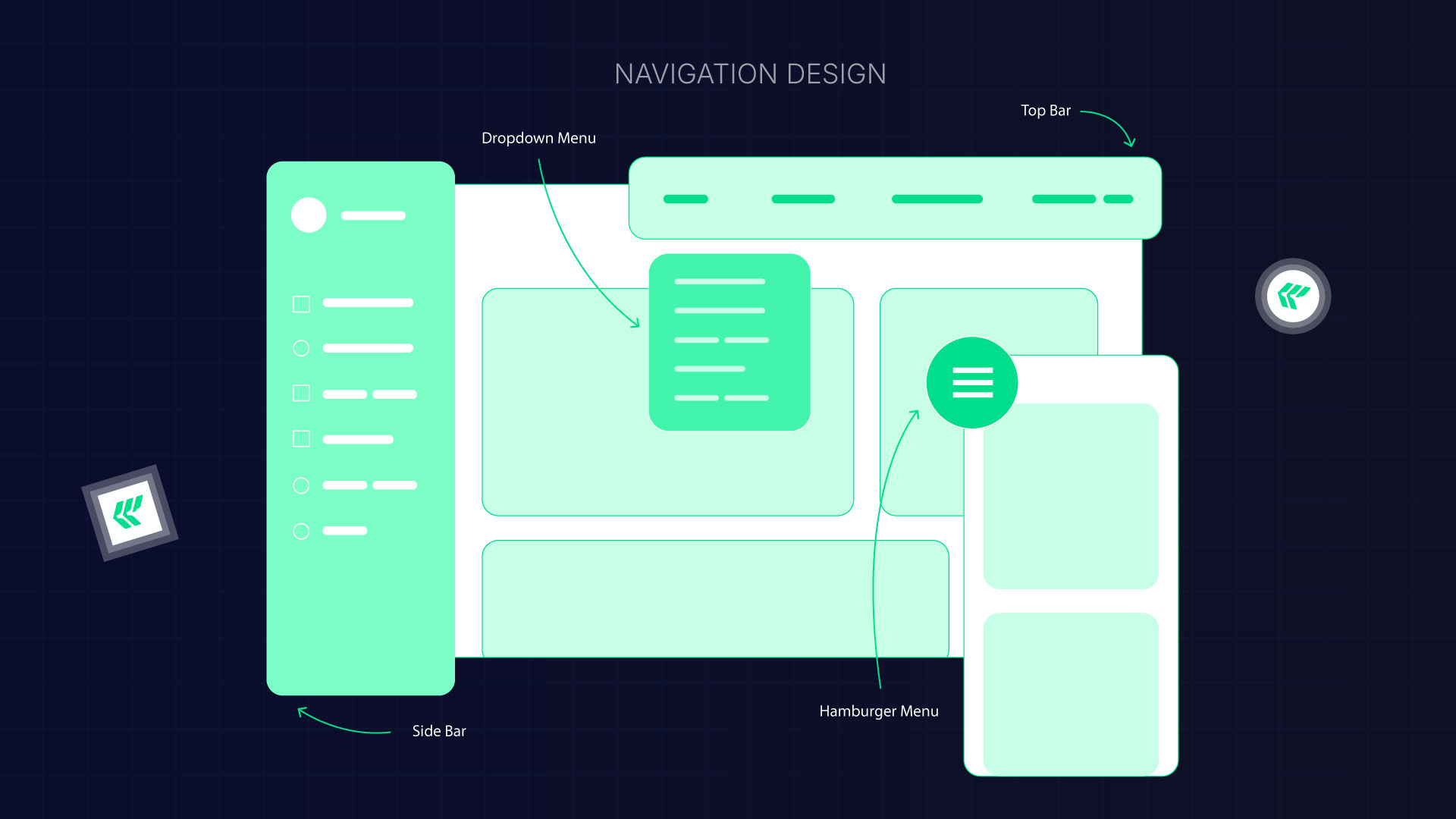
When your menu is hard to understand, users feel lost. Complicated menus, unclear labels, or missing breadcrumbs make people unsure of where they are on your site.
Why it’s a problem:
If visitors can’t find what they need quickly, they’ll leave.
How to fix it:
- Keep your menu simple.
- Use clear, familiar words for menu labels.
- Show breadcrumbs so users can see their path.
- Make sure important pages are just one or two clicks away.
Good navigation helps people explore your site with confidence.
2. Poor Mobile UI Design

More than half of internet users browse on their phones. If your site isn’t mobile-friendly, you’re losing visitors.
Common mistake:
Shrinking a desktop site to fit a phone screen. This makes the text too small and the buttons hard to tap.
How to fix it:
- Design with mobile-first in mind.
- Test your layout on different devices.
- Use larger tap areas for buttons.
- Make sure text is readable without zooming.
- Adjust the layout so it fits any screen.
A responsive design makes your website easier to use and helps it rank better in Google.
3. Cluttered Design
Too many colors, fonts, or animations can overwhelm visitors. When everything stands out, nothing really does.

How to fix it:
- Keep your layout clean and simple.
- Use space between sections so content can breathe.
- Focus attention with clear headings and good contrast.
- Remove anything that doesn’t add real value.
Less clutter means more clarity and better focus for users.
4. Inconsistent Look and Feel

If every page looks different, visitors get confused. Buttons, fonts, and colors should stay consistent throughout the site.
Why it matters:
Consistency helps people learn how your site works. When each page feels new, they have to think harder, and that slows them down.
How to fix it:
- Create a style guide with your fonts, colors, and button styles.
- Use the same design elements on all pages.
- Check your site regularly for inconsistencies.
A consistent design feels professional and trustworthy.
5. Weak Error Messages or No Feedback
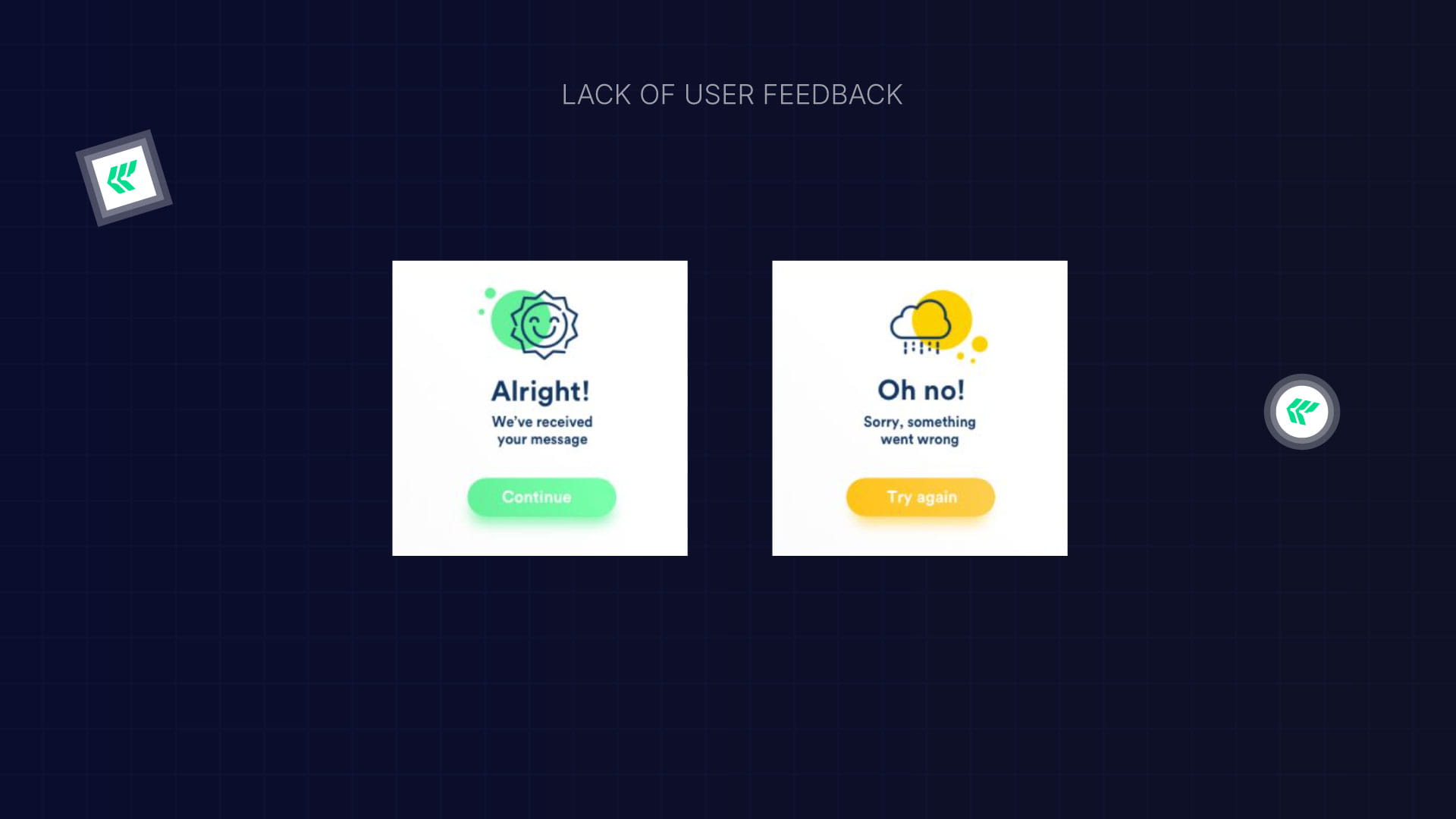
When something goes wrong, users want to know what happened and how to fix it. A plain “Error” message doesn’t help anyone.
How to fix it:
- Write friendly, clear messages that explain what went wrong.
- Add inline messages for form errors.
- Show loading or success messages when actions are completed.
Good feedback keeps users calm and helps them fix problems faster.
6. Endless Scrolling Without Purpose
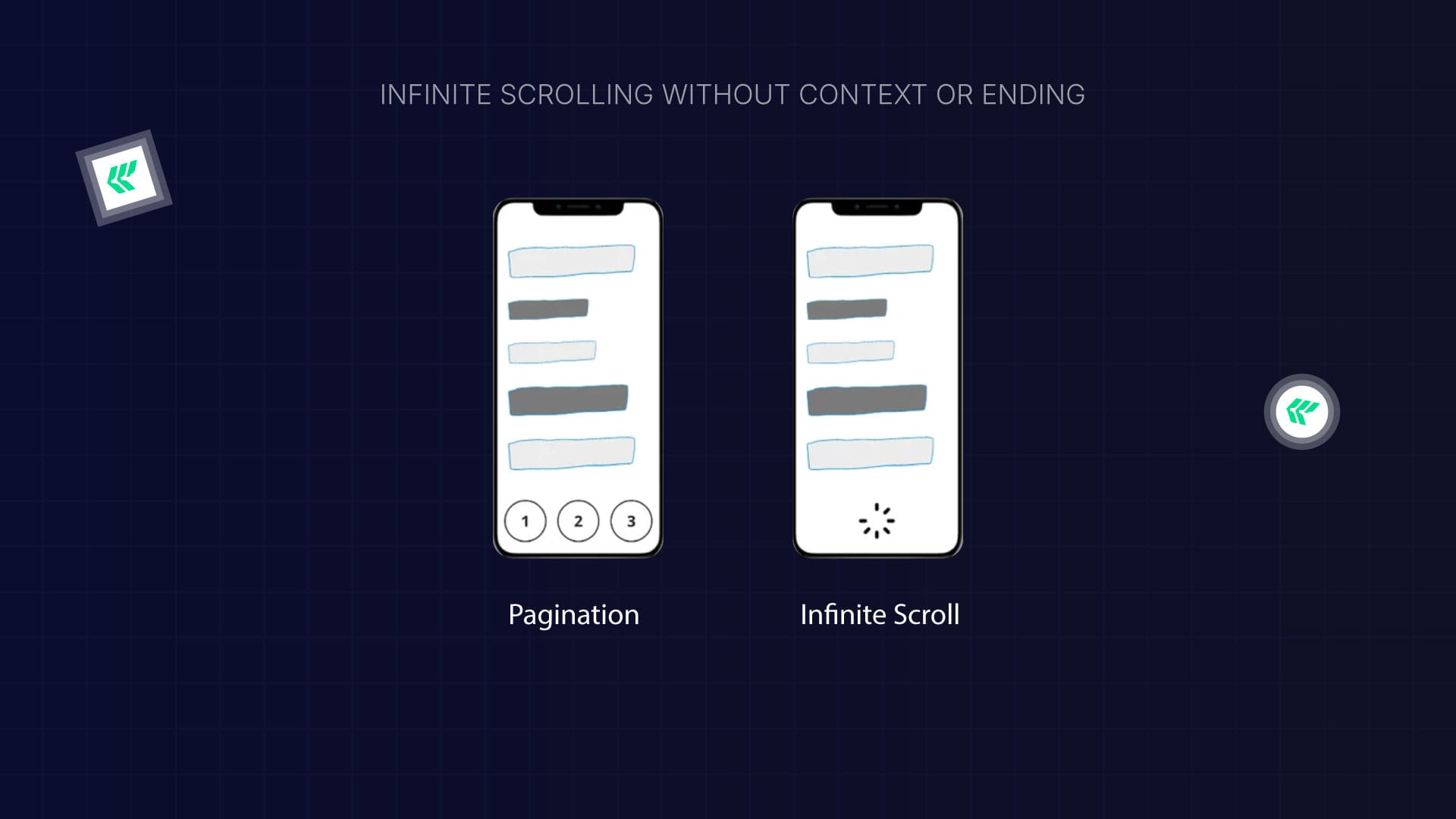
Infinite scrolling can make users feel stuck with no clear end or structure.
How to fix it:
Give users context, add page numbers, progress indicators, or clear sections. Help them know where they are on the page.
7. Misleading Buttons or Text (Dark Patterns)
.jpg)
Tricky language like “Check this box to opt out” confuses users and damages trust.
How to fix it:
- Use simple, honest wording for all buttons and forms.
- Avoid double negatives or hidden options.
- Be clear about what will happen when users click something.
Transparency builds credibility and keeps users coming back.
8. Hard-to-Read Text
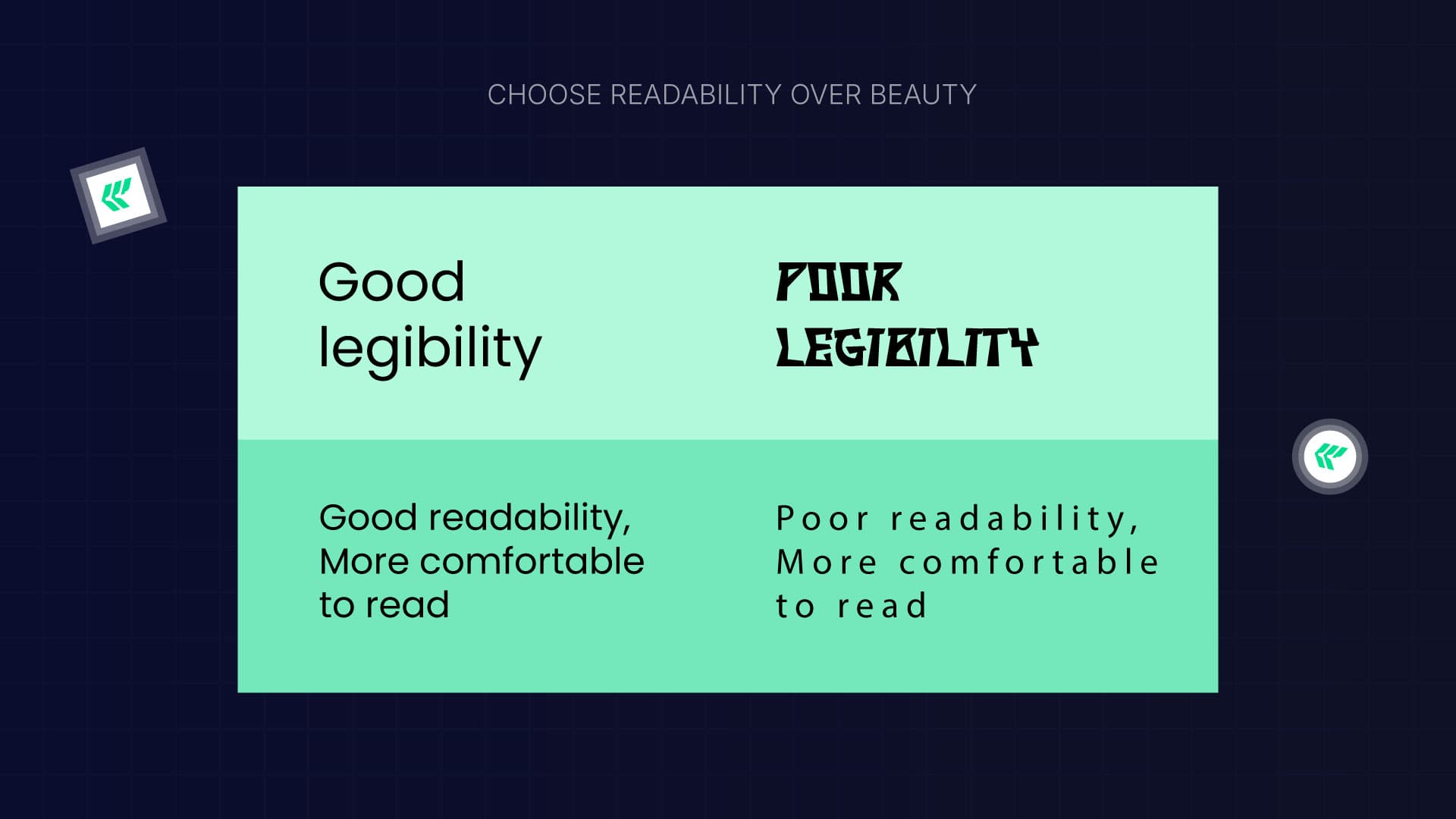
Good typography makes your site easier to read and understand. Poor font choices or long lines of text tire the eyes.
How to fix it:
- Use 16–18px for body text.
- Keep lines around 40–80 characters long.
- Choose clean, easy-to-read fonts like Inter, Open Sans, or Roboto.
- Make sure the text has enough contrast with the background.
- Don’t use too many different fonts.
Readable text helps people stay focused and engaged.
9. Poor Color Choices

Color can guide attention or create confusion. Low contrast makes text hard to read, while too much contrast can feel harsh.
How to fix the design process:
- Use colors that stand out from the background.
- Highlight important information with color, but don’t overdo it.
- Add headings, images, and visuals to break up long text.
Good color use creates balance and helps users scan your content easily.
10. Weak Visual Hierarchy

Visual hierarchy is about showing what’s important first. Without it, users don’t know where to look.
How to fix it:
- Make important elements larger.
- Use contrast to draw attention to headlines or buttons.
- Keep alignment and spacing consistent.
- Group related items together.
- Use white space to keep things clear and easy to read.
Users can navigate naturally when everything on your page has a clear purpose and order.
11. Bad Search Bar Design
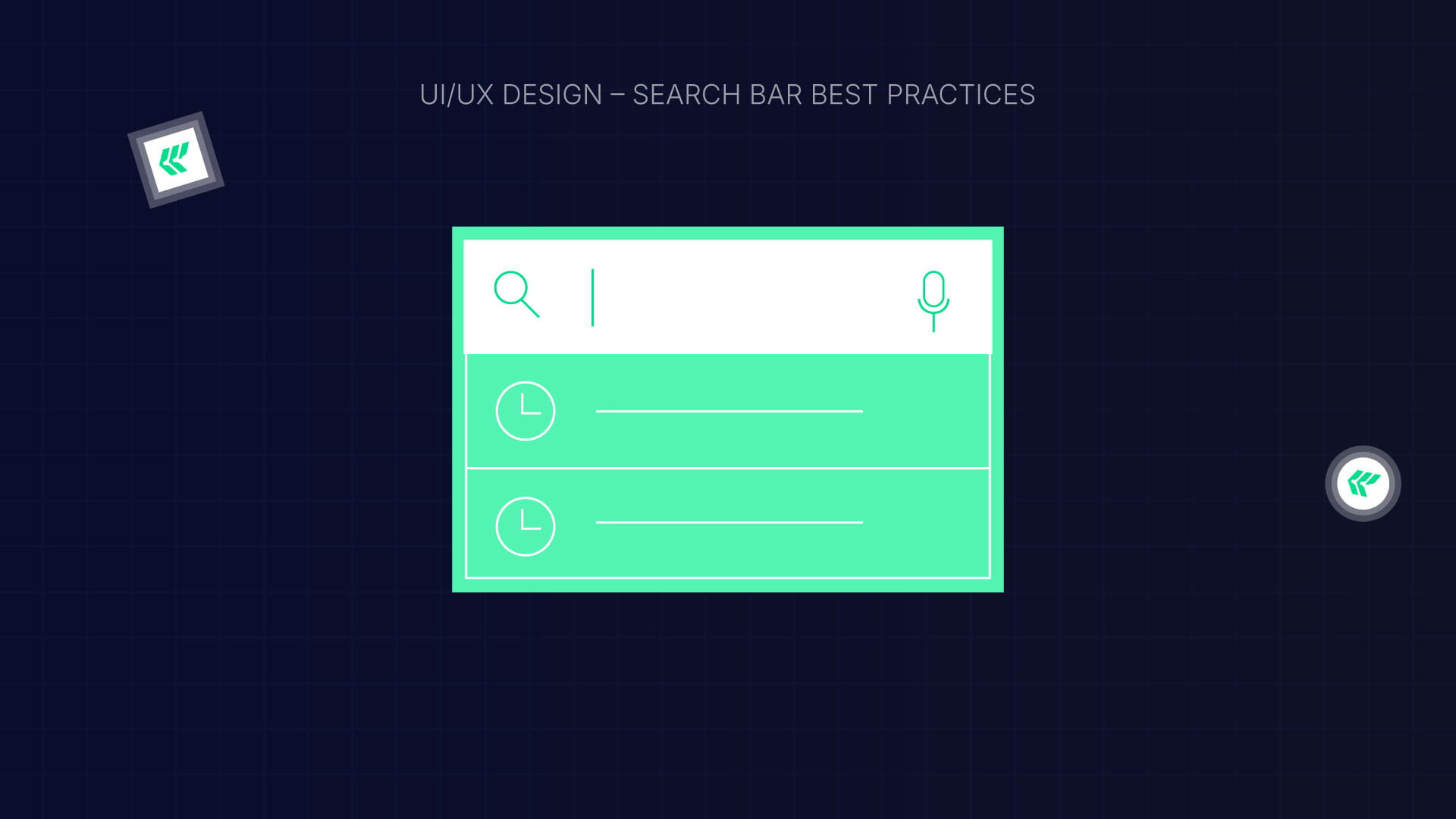
A search bar is essential, especially for websites with lots of content. Users get frustrated if it’s hard to find or doesn’t work well.
Best practices:
- Always include a text box and a search button.
- Put it where users expect it, usually the top right or center.
- Use a magnifying glass icon so it’s easy to spot.
- Add placeholder text and autocomplete suggestions.
- Make sure it works smoothly on mobile.
A simple, visible search bar helps users find what they need faster.
Quick UX Audit Checklist
Want to know what’s next in digital design? — Explore the Current UI Design Trends to Watch in 2026
Ready to Turn Frustration into Conversions?
Bad UX silently kills engagement, trust, and sales, but it doesn’t have to.
👉 Need a UX audit for your SaaS or website?
Or, if you’re ready to redesign with purpose
✨ Explore our UI/UX Design Services
to craft experiences that delight users and drive measurable growth.
FAQ: UI/UX Design Mistakes & How to Fix Them — A Practical Guide for Better User Experience
1. What makes a good user interface and product design?
A good design combines clear information architecture with thoughtful design choices to meet real user needs. It guides user behavior smoothly, reduces user frustration, and works seamlessly across every mobile device.
2. How does a UX designer improve user satisfaction?
UX designers observe real users, run user testing, and adjust the interface based on user behavior. By focusing on user experience design and aligning it with actual needs, they create intuitive products that keep users happy and engaged.
3. Why is understanding user needs important in user experience design?
Understanding user needs ensures your product design solves real problems. When UX designers tailor the user interface to what users expect and reduce friction, it boosts satisfaction and prevents frustration on both desktop and mobile devices.
.webp)
Migrating your website to Webflow can feel risky, especially when your site already has strong SEO rankings, valuable content, and domain authority.
Your fear of losing visibility or breaking your site’s structure is valid.
That’s why choosing the right Webflow migration expert matters. It ensures you can safely transfer your site to Webflow without losing SEO rankings, valuable data, or breaking important links.
In this guide, we’ll help you identify the best agency for Webflow migrations, what to expect from the process, and how to choose the right partner who can make your move seamless, secure, and SEO-safe.
Common Migration Routes Webflow Services Offer
Best Webflow migration experts in web design handle all platform migrations with SEO preservation, data control, and design flexibility.
The most demanded migration routes they usually provide:
- WordPress to Webflow
- Wix to Webflow
- Figma to Webflow
- Squarespace to Webflow
- Shopify to Webflow
- Framer to Webflow
Why Choosing the Right Webflow Migration Expert Matters
Migration to Webflow is usually a matter of fear about losing SEO ranking, drastically impacting UX performance, or the client losing or having a lower speed.
So, let's see how selecting a Webflow migration expert makes everything smooth and risk-free.
1. Your Website’s Search Ranking Matters
Without a responsible Webflow migration service, you can lose SEO data, URLS, and alt text search engine rankings.
Even if it can totally risk an enterprise-grade business wanting to move to another site with huge content and high SEO rankings.
Webflow content migration services ensure all the dynamic content, pages, URLs, and metadata remain the same as in the Webflow CMS.
Bonus: Download our Webflow Migration Checklist to handle redirects and SEO safely.
Rebuilding UX Design Without Hurting Conversions
Redesigning a Website can impact client conversion, engagement, or regular flow.
Like, your Healthcare WordPress website's UX design is familiar to your regular audiences, clients, or prospects.
Once you migrate your site to Webflow, poor UX or a different user interface can confuse clients and damage your website's reputation.
In that case, choosing a leading web design company for Webflow migrations is the best overall way to keep your UX/UI design similar and stronger. It'll cut costs but will increase revenue 10x better.
Optimize Website Speed and Performance After Migration
Migrating to Webflow is somehow connected to better speed and performance.
WordPress or other Website CMS has plugin vulnerabilities, security issues, and slower speed.
But what if you're experiencing poor performance even worse than before?
Selecting the wrong migration agency, your new Webflow website will have technical issues, a broken layout, unresponsiveness, and slower speed.
So, choosing the right webflow migration service ensures all things are optimized and work as expected.
Criteria for Selecting a Migration Agency
1. Experience with Webflow Migration
Choose an expert agency that handles a complete Webflow site transfer. Look at whether they have completed the Webflow migration project.
From migrating content from the new Webflow website design, identify if they really ensure every step when switching websites.
2. Platform-specific Expertise
Migrating from WordPress to Webflow has different approaches from Squarespace or Wix.
Like domain transfer limitations, content management, the blog migration process, and tools.
Depending on your current website CMS, evaluate the agency's process, tools, or previous experience with similar projects.
3. Webflow Certification
Go for certified Webflow migration specialists to avoid any potential risk, losing SEO data, or facing issues.
When searching, the best agency for Webflow migrations typically has Webflow certification, such as being a Webflow Enterprise Partner.
They are an expert and trusted agency to provide services like Webflow development, Webflow SEO, and Webflow Migration
4. SEO and Content Migration Capabilities
Preserving SEO ranking is a common challenge to address quickly. Hire a Webflow migration expert if they are mapping out URLs, metadata, headers, structured data, and content accurately.
Well, they should also set up 301 redirects, sitemap updates, and other SEO best practices to avoid losing traffic post-migration.
5. Project Timeline and Process Transparency
Webflow migration specialists typically give you a transparent timeline including defined milestones and deliverables.
Identify agile processes, methodologies, and communication tools like Slack and Notion to track migration progress and timeline.
6. Cost and Pricing Models
Always forward with Webflow agencies that provide a clear cost estimation.
Check out Webflow migration pricing packages and structure—hourly, fixed, or subscription.
7. Support After Migration
Post-launch support is crucial for fixing any technical issues, missing content, or broken links during migration.
Partner with an expert Webflow migration agency that provides an expert that provides continuous support for further errors. But don't get trapped in hidden fees or long-term contracts.
Questions to Ask Potential Migration Agencies
Before choosing the right webflow migration service, ask questions to evaluate their experience, professionalism, and clarity.
What is Your Webflow Migration Process?
Ask what the specific process or steps they follow to provide a successful migration are.
- Do you provide current site audits?
- Are you going to redesign my existing website structure?
- What technical integration will you do?
- Does it include domain and hosting transfer costs?
- Do you offer post-launch support?
How Do You Handle SEO During Migration?
Ask for a clear mapping of an existing website's SEO.
- Do you back up all of my alt text, URLs, and metadata?
- How do you fix broken links after migration?
- Do you provide SEO issue fixes after launch?
Can You Migrate Complex Content Types?
If your website includes dynamic content like blogs, case studies, products, or portfolios, you’ll need a team skilled in Webflow CMS architecture.
- Can you migrate custom post types, categories, and tags?
- Will you preserve media assets and internal linking?
- How do you handle integrations (HubSpot, Zapier, or analytics tools)?
- Do you offer custom CMS setups for scalability?
What Do You Charge for Website Migration Services?
Always request a clear cost breakdown before signing a contract.
Ask whether the quote includes:
- Content and CMS migration
- Website design and development
- E-commerce Integration (if relevant)
- SEO preservation and redirects
- QA and testing
- Launch and after-support
Ready to Migrate Your Website?
Migrating to Webflow seems complex, but you can enjoy a seamless migration journey by choosing the right partner.
Understanding what services Webflow migration provides, the actual migration challenges, and the questions to ask, you can hire the right one.
So, searching for the best Webflow migration experts in web design?
Consider ideapeel, the best agency for Webflow migrations in the US.
We’ve migrated more than 100+, who already experienced the fastest speed, better SEO ranking, and maximum ROI.
Don't feel safe migrating your site yet?
Get a free consultation and see the clear roadmap we work on!
FAQs about Webflow Migration Expert
How long does a Webflow site migration take?
A typical Webflow site migration takes anywhere from 3 to 6 weeks, depending on your site’s size and complexity.
How much do Webflow migration services cost?
The cost of Webflow migration services ranges from $500 to $5,000+, depending on your current platform, number of pages, and required integrations.
What’s included in Webflow content migration services?
Webflow content migration services include moving all your existing pages, CMS items, blog posts, products, images, videos, and metadata into the Webflow CMS.
Build Bold. Grow Fast.








